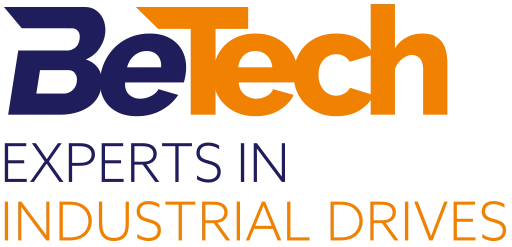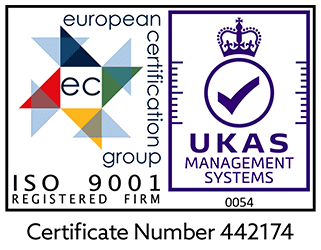Wastewater treatment is a complex yet essential process that safeguards our environment and public health.
At its core, this process involves the meticulous removal of both organic and inorganic contaminants from wastewater sources, including effluents and domestic sewage. Electric motors and geared motors play an indispensable role in this endeavour, powering the machinery and systems that drive each stage of treatment, be it physical, chemical, or biological.
The significance of selecting the right geared motor for wastewater applications cannot be overstated. With a myriad of contaminants to address and multiple treatment stages to navigate, the efficiency and reliability of the entire system hinge on the performance of its primary drive.
An aptly chosen geared motor ensures that each treatment stage operates optimally, from sediment removal to chemical treatments and biological processes. Conversely, a mismatch can lead to inefficiencies, increased operational costs, and compromised water quality.
The choice of drive be it a stand along motor or geared motor, is not only a technical decision but one with profound environmental, economic, and societal implications as it is critical downtime is completely avoided.
The water treatment line is usually composed by the following stages:
1. Driving Pumps and Agitators:
Motors and geared motors power the pumps that move wastewater through the various stages of treatment. They also drive agitators, ensuring that the water is properly mixed during treatment processes like aeration and digestion.
2. Controlling Flow Rates:
The speed of geared motors can be adjusted to control the flow rate of wastewater, ensuring that each treatment stage receives the appropriate volume of water for optimal operation.
3. Facilitating Sedimentation:
In sedimentation tanks, geared motors drive the mechanisms that help settle and remove sludge from the bottom. These are often known as scraper drives, and can be incredibly high reduction ratios for slow operation and high torque.
4. Powering Conveyors:
After dewatering, the solid waste or sludge is often transported using conveyors powered by geared motors.
5. Aiding in Disinfection:
In stages like ozonisation, geared motors help in the dispersion of ozone or other disinfectants.
Assess the Application Needs:
Flow Rate: For pumps, determine the volume of wastewater that needs to be processed within a specific time frame. The size of the pump and the application requirements will determine the size of the motor and whether a gearbox is required. For other parts of the process, the speed is also critical. Wastewater treatment applications are often very slow, high torque selections.
Torque Requirements: Understanding the force needed, especially for processes like sedimentation or moving thick sludge, it critical to correct selection. The torque demand can change during the process.
Duty Cycle: Determine if the motor will run continuously or intermittently. Its often a good idea to have a high service factor, to ensure the unit will last a long time and prevent costly downtime.
Understand the Treatment Stages:
Different stages, such as preliminary treatment, primary sedimentation, aeration, and disinfection, might have varying motor requirements. Map out the motor needs for each stage.
Consider Environmental Factors:
Corrosion Resistance: Given the chemical nature of wastewater, not to mention most applications will be exposed to the elements, the use of severe duty products such as cast iron motors and gearboxes.
Temperature: Ensure the motor can operate efficiently in the temperature conditions of the treatment facility. During winter months, it may be a good idea to specify anti condensation heaters to prevent winding damage.
Waterproofing: Since the environment is wet, the motor should have a good ingress protection (IP) rating to prevent water intrusion either from the application or rainfall.
Energy Efficiency:
If the application does not need to be run at full speed, its possible to make significant energy savings, especially on variable torque loads such as pumps. Consider fitting an Invertek ECO Optidrive to take advantage of this and reduce running costs.
Safety and Reliability:
Ensure the motor has safety features to prevent issues like overheating.
Opt for motors known for their reliability to minimise downtime and maintenance.
Flexibility and Adaptability:
Consider motors that allow for speed and torque adjustments, especially if the treatment needs might change or if the plant handles varying wastewater types.
Maintenance and Support:
Consider the ease of maintenance. Motors that are easy to maintain or replace can reduce operational downtime.
Ensure that the manufacturer or supplier provides good after-sales support and has spare parts readily available.
Budget and Cost:
While it’s essential to get a motor that meets all requirements, it’s also crucial to consider the budget. However, remember that investing in a high-quality motor can lead to long-term savings in maintenance and energy costs.
Consult Experts:
Engage with motor manufacturers or suppliers who have experience in wastewater treatment applications. They can provide valuable insights and recommendations based on your specific needs.
Choosing the right geared motor is essential because it ensures that each stage of the wastewater treatment process operates optimally. The correct motor can provide the necessary speed and torque for tasks ranging from sedimentation to aeration, ensuring efficient and effective treatment.
Key considerations include torque requirements, corrosion resistance due to the chemical nature of wastewater, energy efficiency to ensure cost-effective operation, flexibility to adjust to varying flow rates or treatment needs, and reliability to minimise downtime and maintenance.
Answer: Different stages of wastewater treatment may require varying torques. For instance, moving thick sludge might demand more torque than aerating water. Understanding these requirements ensures the motor can handle the task without overexerting, leading to longer motor life and efficient operation.
Wastewater treatment often involves chemicals and substances that can be corrosive. Motors with high corrosion resistance are essential to ensure they don’t degrade prematurely, ensuring consistent performance and reducing maintenance and replacement costs.


Betech 100pt Ltd
Four Square Buildings, Thomas Street, Heckmondwike,
West Yorkshire WF16 0LS
Registered in England No. 240 4937
VAT No. 461 3067 67
Betech Terms & Conditions
To view our updated terms and conditions of sale